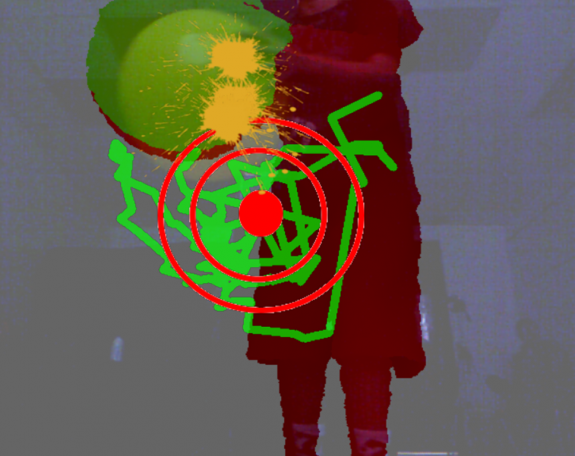Research Team: Kathryn Ringland, Rodrigo Zalapa, Megan Neal, Lizbeth Escobedo, Monica Tentori, Gillian R. Hayes
Many children with neurodevelopmental disorders, such as autism spectrum disorder, have sensory processing disorders (SPD), which can lead to inappropriate behaviors and impairments. One therapeutic approach to the kinds of SPD frequently observed in children with neurodevelopmental disorders involves the use of a variety of tools including objects with various textures and tactile sensations, mirrors, and Multisensory Environments (MSE) saturated with visual and audible stimuli and specialized equipment for sensory stimulation. However, children with SPD each have a unique prescription for the amount of stimulation they require for the therapy to be effective. MSE must be physically altered before each child receives therapy.
SensoryPaint is an interactive surface with the capability of superimposing the user’s reflection on a projected surface and “painting” this surface with balls of different textures and colors, which was designed to augment traditional therapies. This software uses a Kinect to detect the movements of the user and the balls. The user’s image is reflected on the screen, as well as their shadow superimposed on their reflection.
Initial studies of the SensoryPaint system are focused on uncovering the potential of this technology to support sensory integration, including stimulus sensitivity, body awareness, motor functioning, and attention and engagement.

